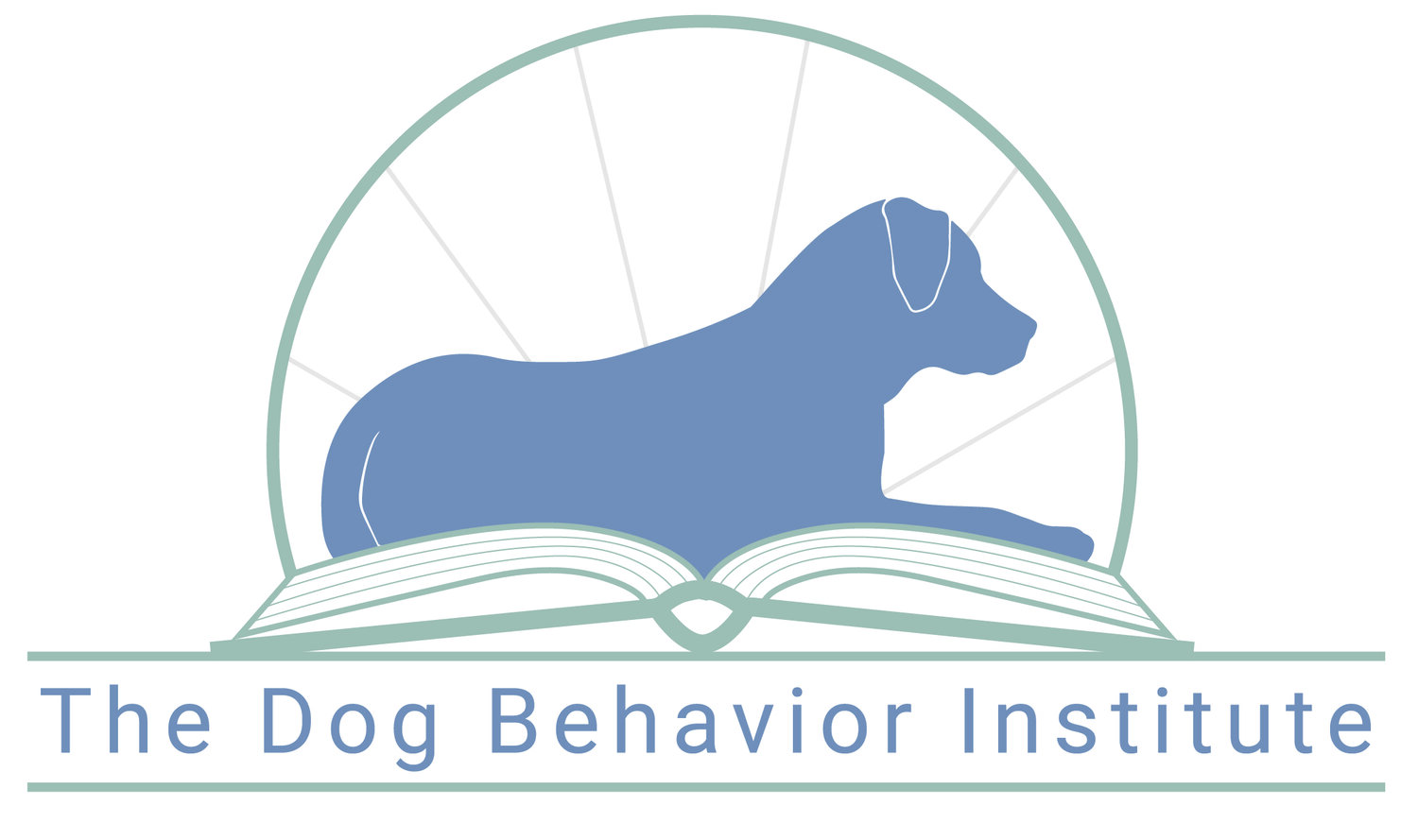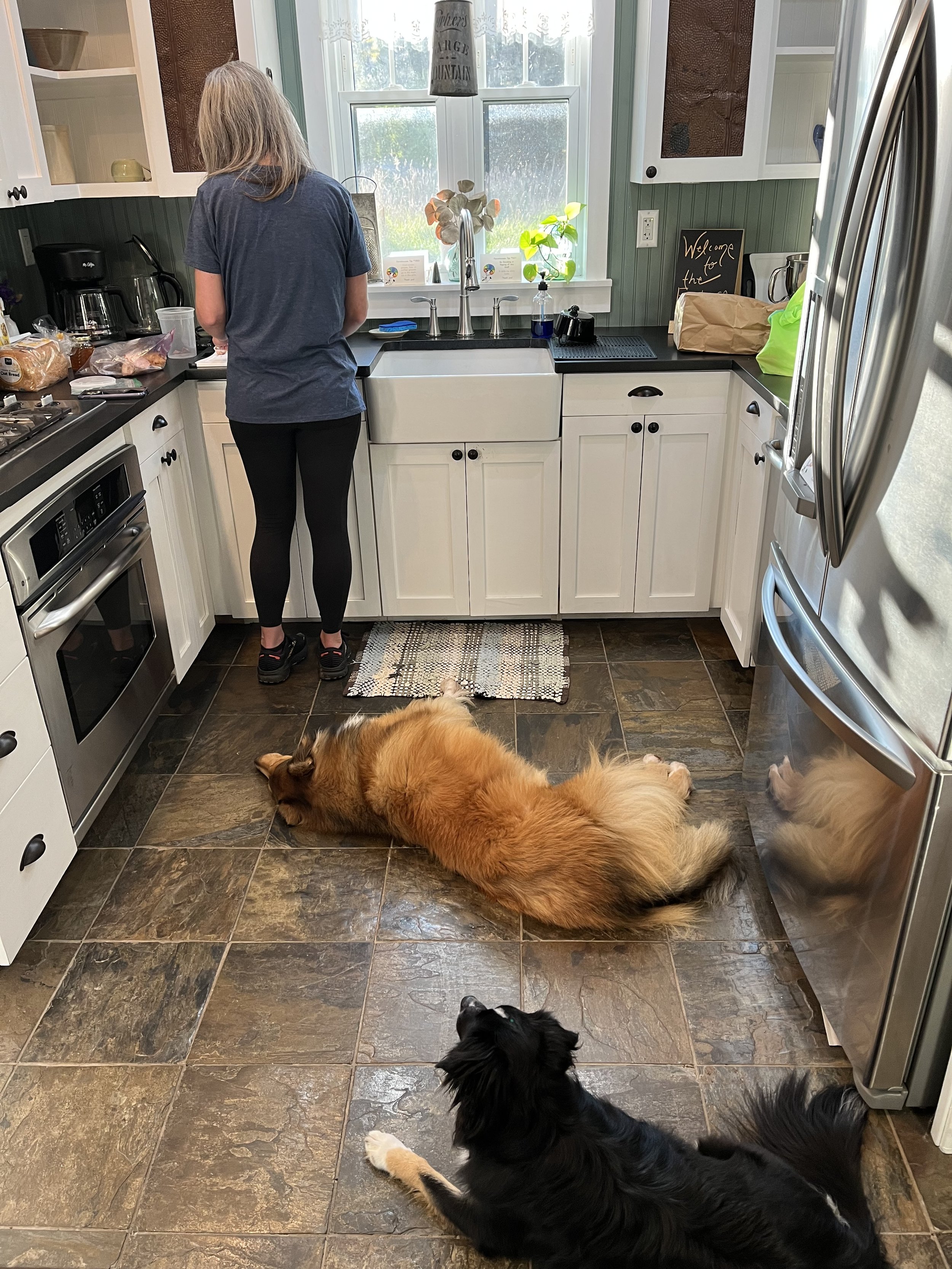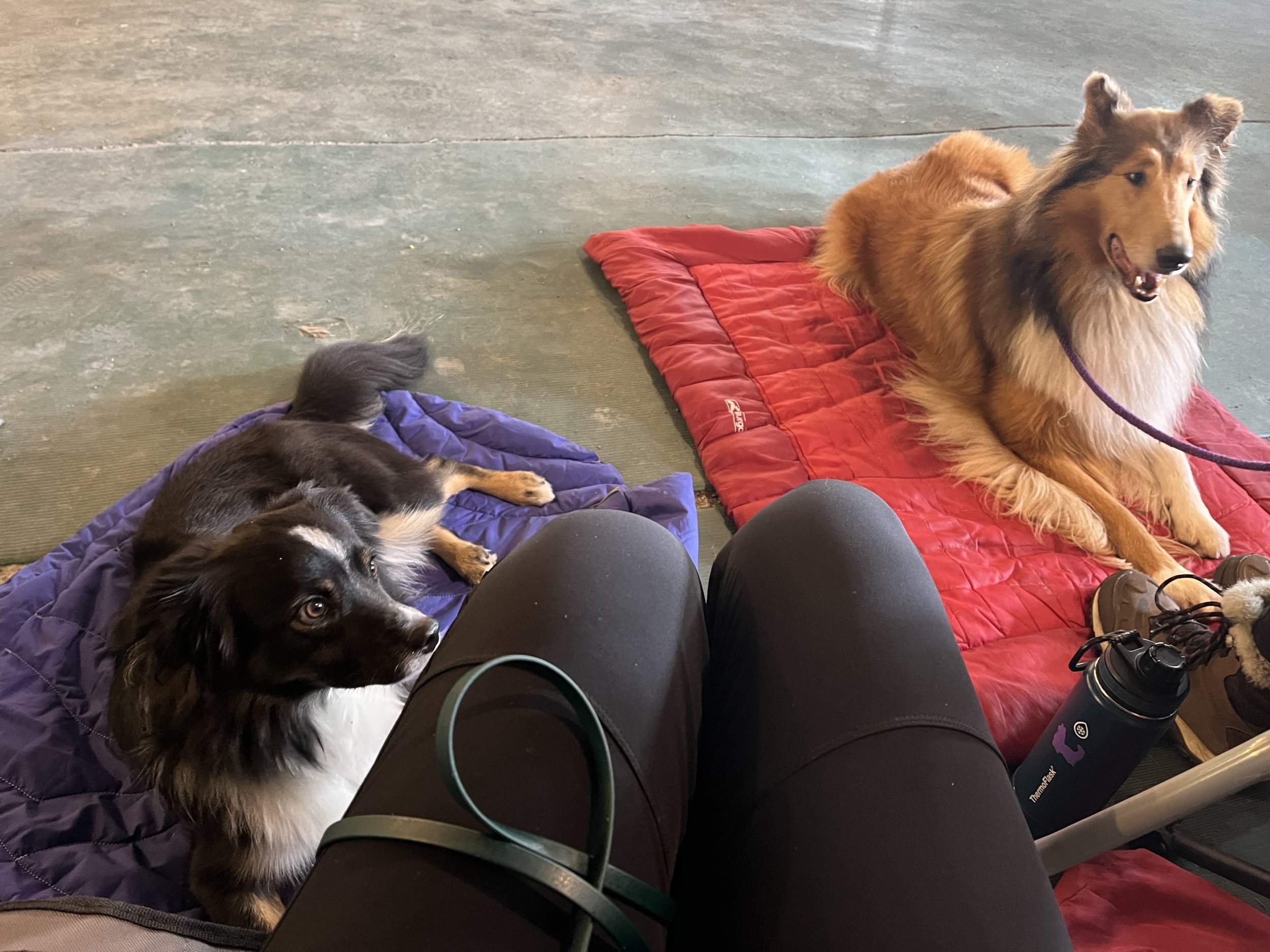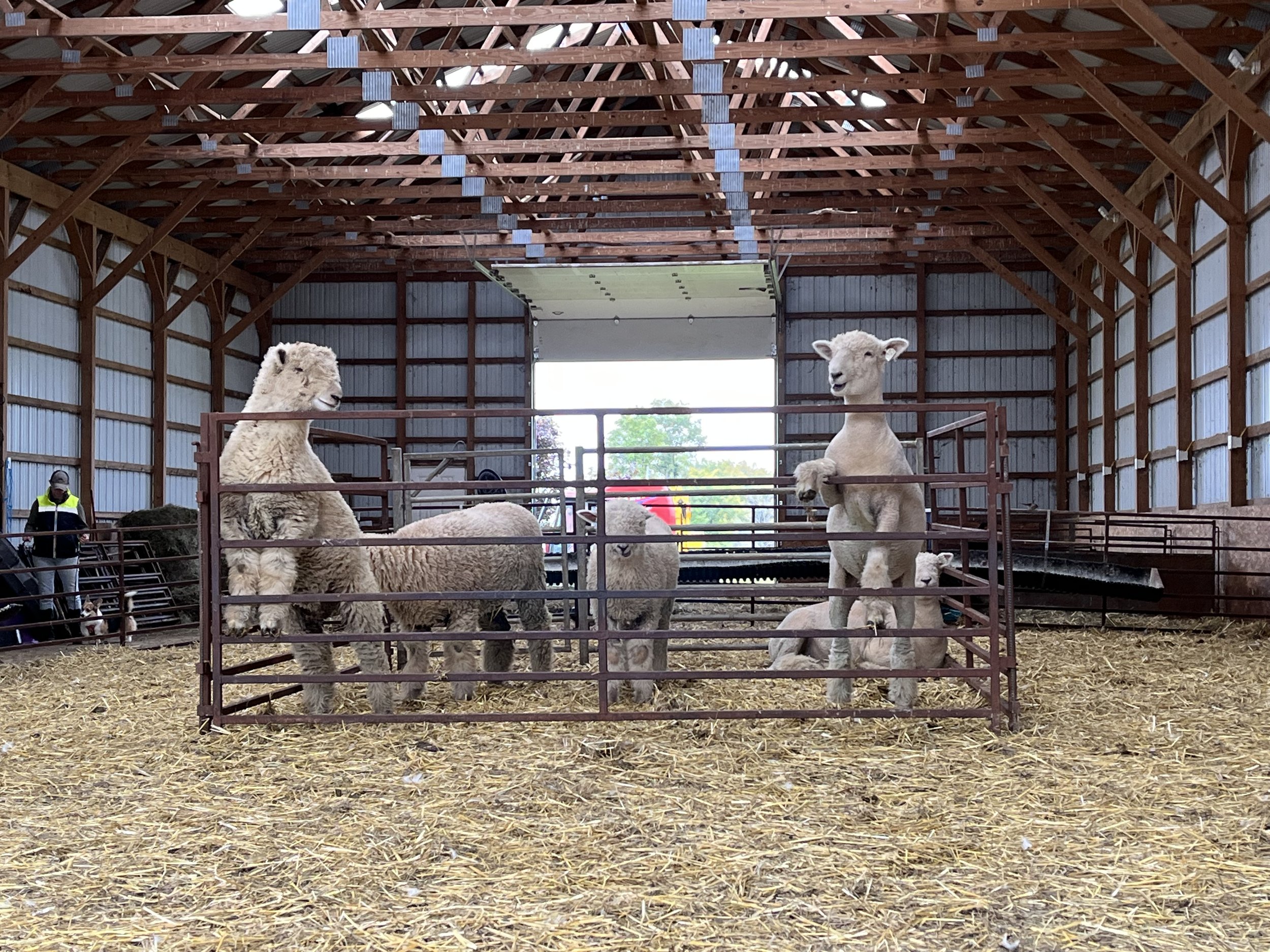Kerby the Herding Dog: In Which We Go “Sheeping”
By Stephanie Keesey-Phelan, Ph.D., BCBA-D
It is appalling to me that I am just now sitting down to compose my thoughts on Kerby’s first clinic that happened last September! It is now eleven months later and we’ve continued to do so much. The title of this blog post was going to be “In which we go to a herding clinic” but at a conference I attended this summer where I met another sheep herding enthusiast, I was informed of the very technical term of “sheeping” as shorthand for herding sheep and I am officially adopting it :) (don’t worry, I will still title these posts “Kerby the herding dog” because “Kerby the Sheeping Dog” sounds like he’s dressing up as a sheep, and we’re just not quite there yet).
Way, way back in the summer of 2023, I was eagerly preparing to take Kerby to his first clinic at the Canine Center at Hessian Hill Farm in upstate New York. (If you follow DBI on social media you’ll know this is also the place where we partnered with Blue Dog to provide a Control Unleashed Workshop this June - you never know where you’re going to make connections!) I was beyond excited because this was my opportunity to meet and learn from Barb Buchmayer in person! It would be impossible to overstate Barb’s contributions to the world of positive herding - she is a trailblazer in this regard and wrote the book that provided a strong jumping off point when it comes to herding: Positive Herding 101: Dog Friendly Training.
Attending this clinic would be a first for us in a number of regards: First clinic, first time car crating, first time doing formal training with other people and dogs in a farm setting, first time staying in an AirBnB with friends and a dog we weren’t super familiar with yet. I was delighted that my good friend Kim Palermo of Blue Dog would also be attending with her collie Jane. We showed up ready to learn!
Kim and I arrived in New York the night before the clinic. We stayed in a lovely AirBnB about 15 minutes away from the farm and conveniently located right next to a trailhead. The location was perfect for giving the dogs an opportunity to move their bodies, sniff, and explore before we all settled in together for the night.
The next morning we got ourselves up and caffeinated, prepared a boatload of treats for the dogs, and headed over to the farm. Kim and I parked our vehicles next to each other which was a benefit for Kerby in particular as he had not been car crated for this length of time before and had some challenges with unfamiliar people around him. The car door that corresponded with his crate door opened to face Kim’s van and Kerby’s new best friend, Jane. Other participants' cars were lined up in the same area and other dogs in cars were barking on and off throughout the day so I had to listen carefully for Kerby, but fortunately he settled in and ended up doing really well in his crate when needed throughout the weekend.
Day 1:
The plan for that first morning was that we would have a brief lecture with Barb before doing some training in the indoor training center, break for lunch, and then more training in the afternoon. The clinic was designed in a seminar-style, so the working teams had a specific order that they would each get to consult and practice with Barb 1:1 in both the morning session and the afternoon session. Barb had done a Zoom meeting a few weeks before the clinic for all the working teams, so she already had a sense of who everyone was and what our goals were (I think this is brilliant and would love to see this happen at more clinics!).
Unfortunately that morning, Barb came down with an illness and wasn’t able to teach. However, another trainer present with more herding experience led us through the morning and afternoon sessions. For Kerby, I decided to focus on his flanking as we hadn’t done any work on that skill set yet. In herding, flanks are when the dog circles around the sheep clockwise (“come bye” is the typical vocal cue for this) or counterclockwise (“away to me” is the typical vocal cue for this). Barb’s approach to teaching flanks starts with a circle of traffic cones that the dog learns to move around, so this was our task. And I, like a complete novice, decided that in addition to working on a brand new skill, it would be a great time to learn some flirt pole mechanics as well.
As you might imagine, we absolutely put the car before the horse here. Kerby was clearly nervous about being in a training center with a bunch of people watching him. His ears were back, he had some lip licking, and scanned the environment frequently. He was responsive to Control Unleashed pattern games, which in this scenario provided a perfect means to help him get settled into the environment and the task. He readily took treats and was successful in some of the initial approximations for “Come Bye,” our first flank, which was a huge win. However, in terms of flirt pole skills I think I was too ambitious. Not only were they abysmal, but teaching a brand new skill to Kerby was the wrong time to work on a new mechanical skill when it comes to reinforcer delivery on my end. For day one, our wins included successful car crating, working in a new and busy environment (the training center and the farm), and tolerating my ambitious goals.
I won’t speak for Kim and Jane, but Kerby and I fell asleep as soon as our respective heads hit the pillows that night, and the next morning we were raring to go for Day 2.
Day 2:
As a dog behaviorist, I will tout the importance of good foundational skills and thin slicing of criteria till the cows come home (haha). But I won’t lie when I tell you that Day 2 of the herding clinic was what I was most excited about! It was time for sheeping! Not only that, but Barb was on the mend and ready to teach. Needless to say, we were excited.
That morning, a small flock of sheep had been moved to a small square pen in one of the barns on the property. Our first task of the day was just to answer the following questions: how would our dogs do around the sheep, what behaviors did they emit, and could they respond to known cues in that setting?
Given our spring and summer outings to local farms in my area and our success with Control Unleashed skills, I suspected that Kerby wouldn’t have any big issue being in the space around the sheep. I suspected he might be uncomfortable with a crowd watching him and so I requested that folks not try to pet or interact with him as we transitioned into and out of the space, and Barb kindly kept her distance and didn’t look at him directly.
We entered the space doing some of our favorites from CU, 123 walking, Super Bowls to get into the space, and Up Down and Ping Pong to settle in and focus. Kerby’s ears were back with some lip licks and scanning again as we walked into the space. However he readily engaged in his CU skills and, much to my delight and surprise, he promptly lay down and began to roll in all the sheep poop and hay he could. If I had any worries about his comfort levels, they were quickly dispelled at that point. Even the crowd of laughing onlookers didn’t distract him from this most happy of tasks. I wish I had caught this on camera but alas, I did not.
We let Kerby roll around for a while longer before I began to engage him with more CU pattern games (Ping Pong, Give Me a Break, and Up Down).
Barb told me about what sorts of things she was looking for in terms of Kerby’s body language when around the sheep and encouraged me to give him plenty of space to look at the sheep if he wanted. Kerby didn’t seem to be all that interested in them, but he didn’t appear nervous or worried either. We probably spent about 10-15 minutes in the space before transitioning back out to take a break for lunch.
In the afternoon, the final portion of the clinic, we had a different task that the dogs were not present for. This time, the sheep instead of being in a small pen were in the full barn space and a number of obstacles such as panels to move through, had been set up. All the working team humans were put into pairs, I was working with Kim. The task at hand was for one person to serve as the handler, and the other person to serve as the sheepdog. The handler would give typical herding cues (e.g., “come bye,” “away to me,” “stop,” “walk in”) and the “sheepdog” person had to then follow those cues to move the sheep through the obstacles in a certain pattern. This was nothing short of hilarious. I can’t say that Kim and I were terribly successful in this endeavor; I don’t recall either of us being able to finish the course regardless of who was filling what role. That being said, it was loads of fun and even more important it was extremely beneficial to our learning process. We got to practice giving the cues and watching how the sheep responded to them (assuming the “sheepdog” performed the corresponding skills correctly, which was entirely another matter!), we got to think through how to use the different skills to move the sheep, we got to experience the unbelievable difficulty of getting all the sheep to the same space in the same way, and grow greater appreciation for the complexity of the task. It was a brilliant way to end the clinic.
Or at least it would have been…
I was thrilled with how day 2 went, how well Kerby did, and how much I learned. But this was not to be the end of our time at the farm. While taking a break after the last exercise with Kerby on a 10 foot leash in a grassy area near the sheep pasture, he suddenly jumped forward and before I knew what was happening, came in contact with the electric fence. He leapt back, yelping and running as fast as he could away from the fence with me in tow. I checked him over with great care and, in tears myself, brought him to the fenced in agility yard where Kim was letting Jane have some off-leash time. I let Kerby off leash and he sniffed briefly and bounded over to Jane to initiate play. He ran around the agility yard with what appeared to be his usual gusto and when I told Kim what happened we both looked at Kerby with wonder that he seemed to bounce back so quickly.
Now reader, I hope you will be kind to me here. I was absolutely bereft that I had let this happen to Kerby. I am very well-versed in the many, many reasons not to use punishment and aversive tools in training. I was simply not being careful enough or aware that the fence - a strand of fencing, enclosing an area, not an actual fence like you might have in your backyard - was on.I can assure you that no one has been harder on me about this event than I have. I am devastated Kerby had this experience and am deeply aware of the potential side effects to look out for.
Kerby continued to engage in the same behaviors he had all weekend on the farm with the exception of a very clear steering away from the location where he contacted the fence. I felt a little better that he seemed comfortable in the environment and I was worried that he may have associated the shock with the presence of sheep given the sheep were on the other side of the fence. I found Barb who was wrapping up for the day and told her what happened. After giving me a big hug, Barb suggested we take Kerby back into the barn where the sheep still were to see what his behavior looked like.
Using our trusty CU skills, Kerby transitioned into the barn with me without hesitation. He had some stress-related responses but they didn’t seem to be directed toward the sheep. Given his responding outside the pen, and how comfortable the sheep were with the dogs in general, we brought Kerby into the pen on his long-line and he and I walked slowly around the pen watching the sheep move in response to us. We picked up the pace and Kerby trotted along after me as the sheep continued to move. We wanted to give Kerby more choice in the space and were not concerned about him chasing or injuring the sheep (or vice versa) and so I unclipped his long-line and continued to move around the pen. Kerby moved with me showing more and more interest and confidence in the space as we and the sheep moved. We ended it there and called it a day.
As we walked back to the car, Kerby gave the site of the electric shock a wide berth but otherwise moved at his usual bouncy pace. He accepted treats, spent a little more time with Jane, and we packed up and went home.
Did I spend the entirety of the 3 hour car ride home on the phone with Ran and other dog training colleagues, detailing Kerby’s electric fence experience, wondering what other side effects we might encounter, asking myself if I ruined his life or his feelings about sheep, and generally berating myself? Yes, yes I certainly did. I wasn’t sure if I had destroyed something that Kerby had been so enthusiastic about in one moment of inattention.
Here’s what I can tell you from the vantage point of 11 months later:
I am beyond grateful to Kim and Barb for how they responded to us as a team. They were so compassionate and empathetic, and took extra time to help Kerby decompress and give him a positive experience with sheep before we left.
So far, in other farm adventures since then I have not noted hesitation or stress responses different from any we encountered prior to the electric fence experience (thank god!)
This summer we went back to Hessian Hill for our CU workshop. Kerby hadn’t spent a lot of time with sheep in the past year and what I noted was general hesitation overall. He didn’t seem to be avoiding the location of the incident, but he was more tentative about being near the sheep. We had an extra day on the end of our workshop to hang out at the farm and during that day Kerby and I focused on Look at That, Give Me a Break, Super Bowls, and some pairing in and around the barn and I saw him relax into these exercises as we did them, took breaks, and tried them again. My goal was and always will be to follow Kerby’s lead.
Although this was not how I wanted to end our clinic weekend, it really solidified for me the importance of a positive-reinforcement based approach. I felt nothing but support from the trainers around me who were rooting not only for Kerby’s and my success, but for Kerby’s comfort. And this wasn’t unique to my experience. I saw the same compassion from Barb for all of the teams who came to the clinic that weekend. At The Dog Behavior Institute, we always say that training should feel good, that we aim for joy in the work we do and that goes for both ends of the leash. It was a huge relief to encounter this at the clinic and bolstered my desire to keep working with Kerby and herding as long as he’s into it.
So what’s next in our herding journey?
Well as you know, the clinic was almost a year ago now. Since then I have continued to have some amazing herding learning experiences and been working on foundation skills with Kerby at home over the winter and spring. As I wrote about in a recent blog post, I was diagnosed with Rheumatoid Arthritis at the start of this year which has impacted my ability to get out there and train with Kerby in a big way. But as I start to find some effective treatments, we are starting to plan how to progress Kerby’s training and transition his foundational skills to stock. I’ll continue documenting this journey here and appreciate you sticking with me as we continue to explore herding from a positive-reinforcement lens.






